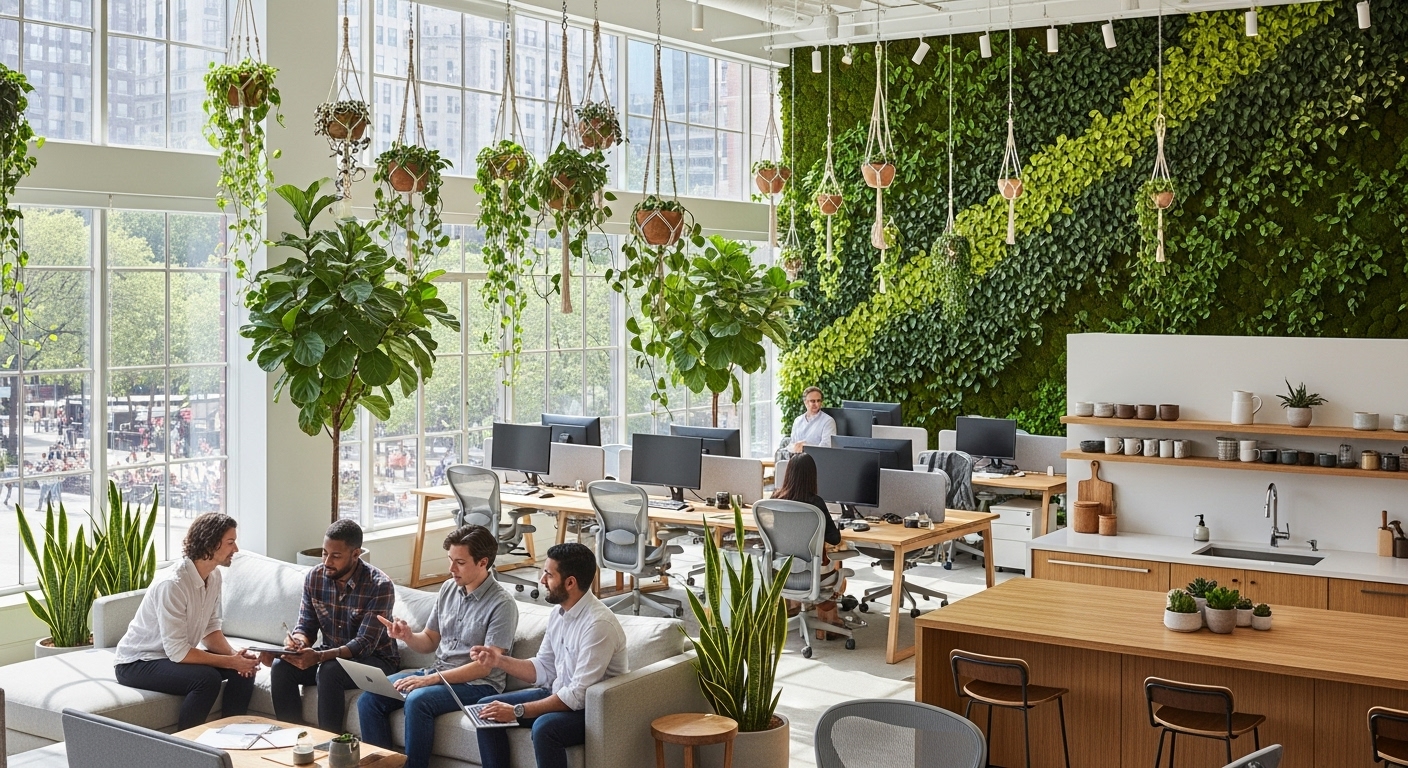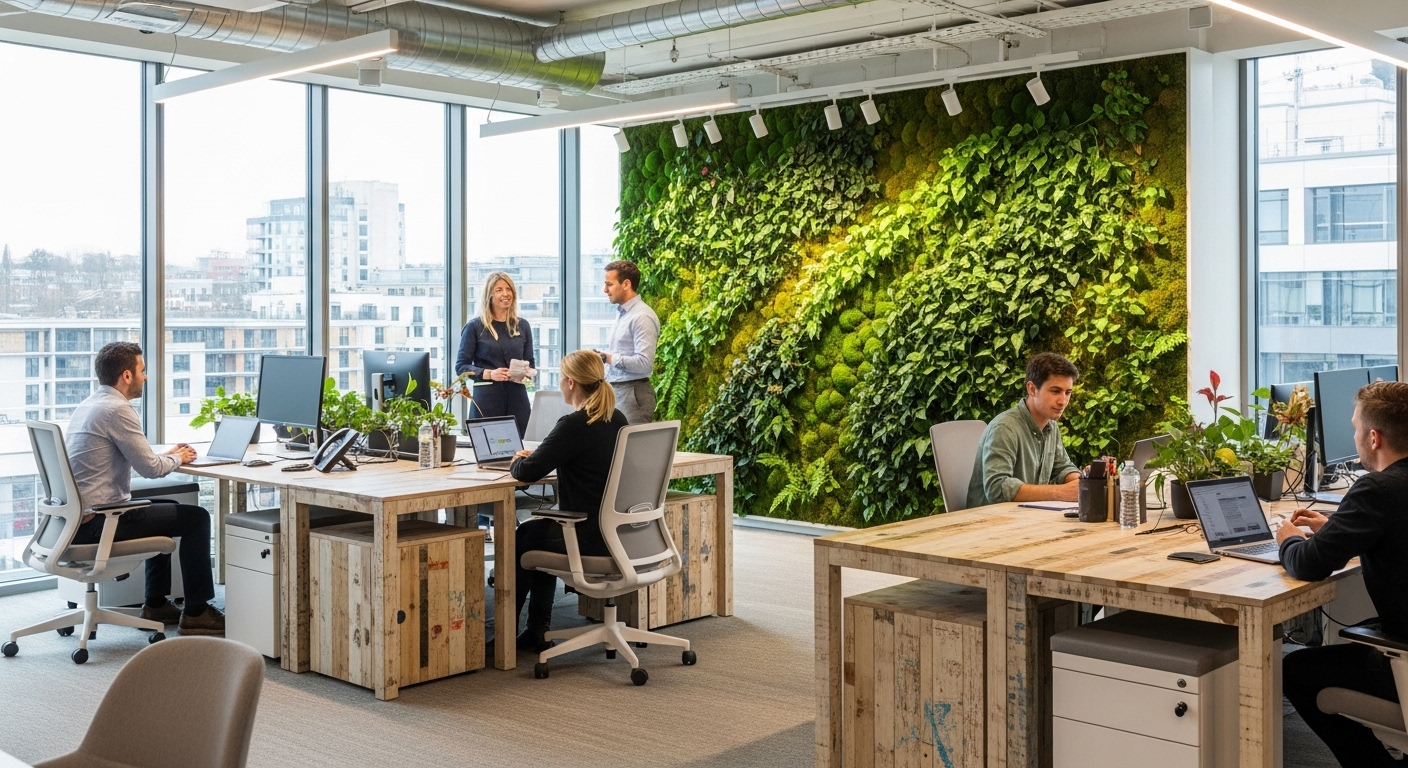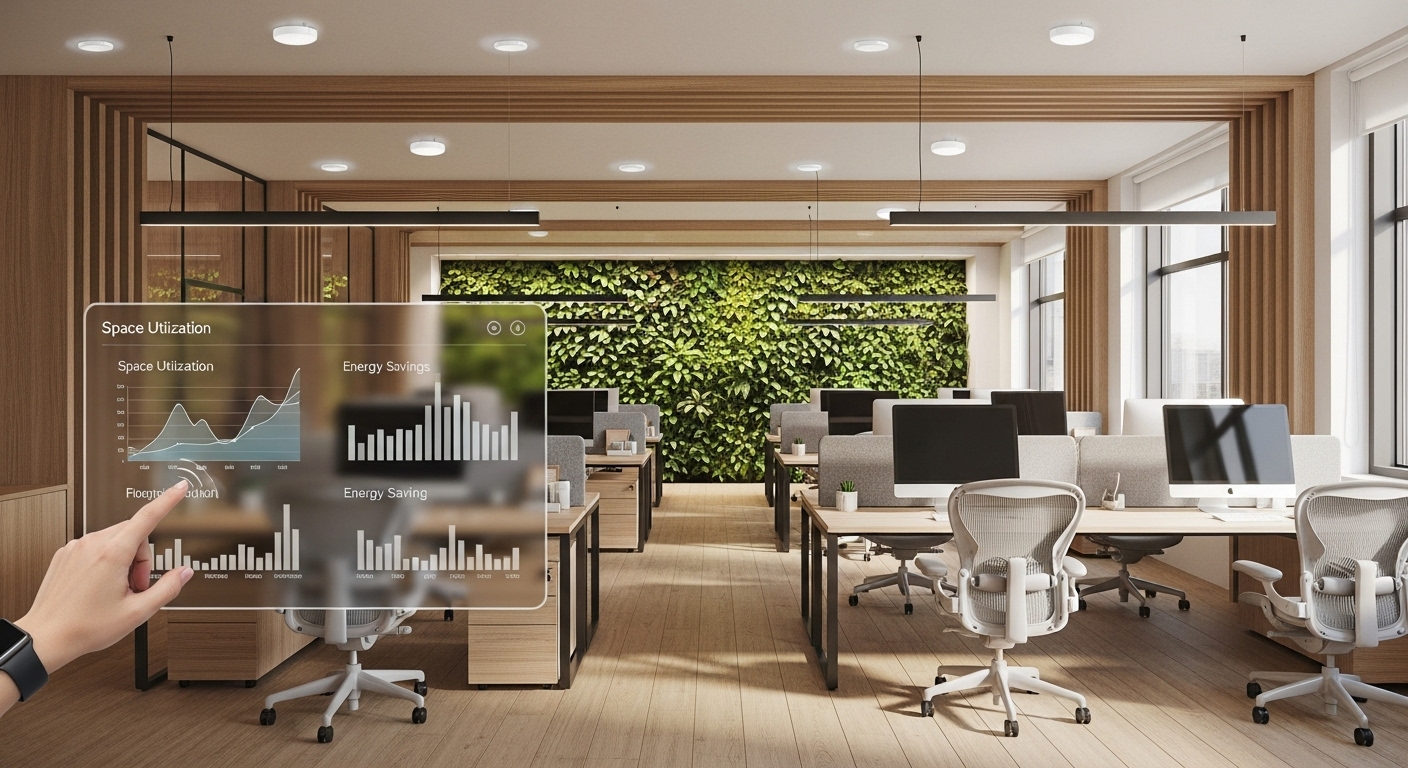In the evolving landscape of the future of work, the concept of a sustainable workspace has shifted from a niche, eco-conscious trend to a fundamental pillar of corporate strategy. No longer a simple matter of recycling bins and energy-saving light bulbs, today’s sustainable office represents a powerful convergence of environmental responsibility, human well-being, and tangible business performance. Companies are discovering that investing in a greener work environment is not a cost center, but a strategic asset that attracts top talent, enhances productivity, and builds a resilient brand. This post explores the compelling new business case for sustainable workspaces, moving beyond the buzzwords to examine how a holistic focus on people, planet, and performance creates a powerful dividend for forward-thinking organizations. We will delve into the specific elements that define a truly sustainable space, from biophilic design to circular economy principles, and outline how these initiatives translate directly into a healthier bottom line and a more engaged workforce.
Beyond the buzzword: what defines a truly sustainable workspace?
A truly sustainable workspace extends far beyond surface-level green initiatives. It’s an integrated ecosystem where design, operations, and culture align to minimize environmental impact while maximizing human health and productivity. At its core, this approach is built on several key pillars. First is energy efficiency, which involves more than just swapping out old bulbs for LEDs. It encompasses high-performance HVAC systems, smart sensors that adjust lighting and temperature based on occupancy, and building envelopes designed to optimize natural light and minimize heat loss or gain. Second is resource management, focusing on water conservation through low-flow fixtures and responsible waste handling that prioritizes reduction, reuse, and recycling, embracing principles of a circular economy. The third, and increasingly critical, pillar is the selection of materials. This means choosing non-toxic, low-Volatile Organic Compound (VOC) paints, finishes, and furnishings, and prioritizing materials that are recycled, rapidly renewable, or sourced from responsible suppliers. Finally, a sustainable workspace is defined by its impact on people. This involves ensuring superior indoor air quality through advanced filtration and ventilation, and integrating biophilic design—the practice of connecting people with nature through plants, natural light, and organic materials—to create a healthier, less stressful environment. Certifications like LEED, BREEAM, and the WELL Building Standard provide comprehensive frameworks for achieving these goals, serving as valuable benchmarks for a truly holistic approach to sustainability.
The talent magnet: winning the war for people
In today’s competitive job market, a sustainable workspace has become a critical tool for talent acquisition and retention. A new generation of employees, particularly Millennials and Gen Z, actively seeks employers whose values align with their own, and a demonstrable commitment to sustainability is a major differentiator. A company’s physical environment is one of the most visible expressions of its values. When a potential hire walks into an office filled with natural light, living green walls, and thoughtfully sourced materials, it sends a powerful message that the company cares about the planet and, by extension, its people. This focus on human well-being is a core tenet of modern sustainability. Biophilic design elements, for instance, are proven to reduce stress, improve mood, and enhance cognitive function. Similarly, ensuring pristine indoor air quality and providing access to natural light have direct links to reduced absenteeism and fewer health complaints. By investing in a workspace that actively promotes health and well-being, companies are not just making an environmental statement; they are investing in their most valuable asset. This people-first approach creates a positive feedback loop: employees are happier, healthier, and more engaged, leading to a stronger company culture and making the organization a more attractive destination for top performers.
Resource revolution: achieving more with less
While the human and branding benefits of sustainability are profound, the financial business case is equally compelling, driven by a revolution in resource efficiency. Adopting sustainable practices delivers a direct and measurable return on investment through significant reductions in operational costs. The most immediate savings are often seen in utility bills. Upgrading to energy-efficient LED lighting, installing smart thermostats that learn occupancy patterns, and investing in modern HVAC systems can slash electricity consumption by a substantial margin. Water conservation measures, such as installing low-flow faucets and toilets, also contribute to lower monthly expenses. Beyond utilities, the principles of a circular economy are transforming how businesses approach office fit-outs and furnishings. Instead of the traditional linear model of ‘buy, use, dispose,’ a circular approach prioritizes products that are modular, repairable, and made from recycled or recyclable materials. This not only reduces the vast amount of waste sent to landfills during office renovations but also creates long-term value. Furniture designed for disassembly and reuse can be reconfigured for new layouts or sold back into the market, turning a potential liability into an asset. This strategic management of resources proves that what is good for the planet is also good for the profit and loss statement, making sustainability a cornerstone of smart financial planning.
Designing for focus: how green spaces boost performance
The design of a workspace has a direct and measurable impact on the performance and productivity of its occupants. Sustainable design principles, particularly those centered on biophilia and occupant health, are proven to enhance cognitive function, creativity, and focus. The human brain is hardwired to respond positively to nature. Integrating natural elements into the office environment—whether through living plants, views of green space, natural materials like wood and stone, or even patterns that mimic nature—helps to reduce mental fatigue and restore attention. Studies have consistently shown that access to natural light is one of the most desired workplace attributes, correlating with better sleep, improved mood, and higher levels of alertness during the day. Furthermore, indoor air quality is a critical factor in cognitive performance. High levels of CO2 and VOCs, common in poorly ventilated or conventionally furnished offices, can lead to drowsiness, headaches, and a significant decline in decision-making ability. A sustainable workspace, with its focus on superior ventilation and non-toxic materials, creates an environment where employees can think more clearly and perform at their best. By optimizing the physical space for human biology, businesses are not just creating a pleasant place to work; they are engineering an environment for peak performance.
The brand advantage: building a reputation that resonates
In an era of conscious consumerism and investor scrutiny, a sustainable workspace is a powerful tool for brand storytelling and reputation management. It serves as a physical manifestation of a company’s commitment to Environmental, Social, and Governance (ESG) principles, transforming abstract corporate responsibility goals into a tangible, everyday reality. This authenticity resonates deeply with clients, partners, and the wider community. A certified green building or a beautifully designed biophilic office can become a centerpiece for marketing and public relations efforts, differentiating the brand from competitors and demonstrating leadership. For B2B companies, it signals a forward-thinking and responsible partner. For consumer-facing brands, it reinforces a message of quality and care. Moreover, the investment community is increasingly using ESG metrics to evaluate risk and long-term viability. A sustainable real estate portfolio is viewed as a lower-risk, higher-value asset, better insulated from rising energy costs and shifting regulations. By embedding sustainability into its physical footprint, a company builds brand equity that goes far beyond aesthetics. It cultivates trust, showcases innovation, and proves that it is building a business that is not only profitable but also a positive force in the world.
Getting started: practical first steps toward sustainability
Embarking on the journey toward a more sustainable workspace does not require an immediate, large-scale overhaul. The most effective strategies often begin with small, intentional steps that build momentum over time. The crucial first move is to conduct a sustainability audit to establish a baseline. This involves analyzing utility bills to understand energy and water consumption, assessing waste streams to identify opportunities for reduction and diversion, and reviewing procurement policies for everything from office supplies to furniture. With this data in hand, organizations can identify the “low-hanging fruit”—high-impact changes that require minimal investment. Simple actions like a company-wide switch to LED lighting, setting default double-sided printing, or implementing a comprehensive composting and recycling program can yield significant results quickly. Another powerful step is to foster a culture of sustainability by creating a “green team” of passionate employee volunteers. This team can champion initiatives, educate colleagues, and gather feedback, ensuring that sustainability becomes a shared responsibility rather than a top-down mandate. By starting with these practical, measurable actions, companies can secure early wins, demonstrate the value of sustainability, and build the business case for more significant future investments, creating a virtuous cycle of continuous improvement.
Conclusion
The business case for sustainable workspaces is no longer a matter of debate; it is a strategic imperative for any organization looking to thrive in the future of work. The evidence is clear: designing and operating offices with a focus on environmental health and human well-being delivers a powerful trifecta of benefits. It creates compelling environments that attract and retain top-tier talent (‘People’), significantly reduces operational costs and ecological impact (‘Planet’), and demonstrably boosts employee productivity and focus (‘Performance’). The shift is about more than just corporate responsibility; it’s about building a more resilient, efficient, and innovative business. From the immediate ROI of lower utility bills to the long-term brand equity built on authentic values, sustainability is a direct driver of business value. Whether starting with a simple lighting retrofit or designing a LEED-certified headquarters from the ground up, every step toward a greener workspace is an investment in a healthier, more profitable future. The companies that embrace this holistic vision will not only lead their industries but will also build a lasting legacy of positive impact.





